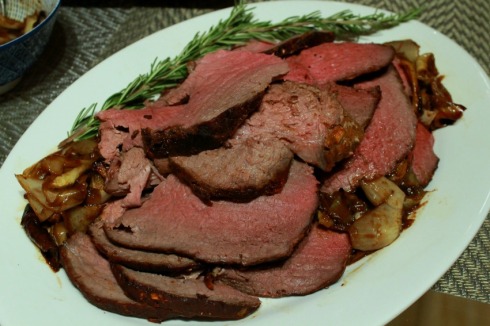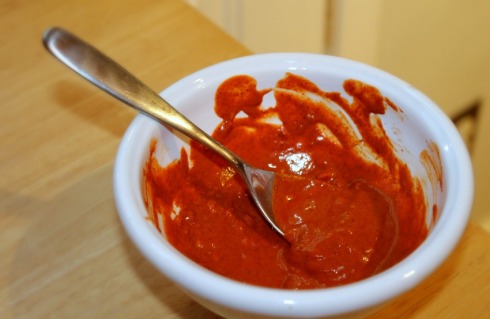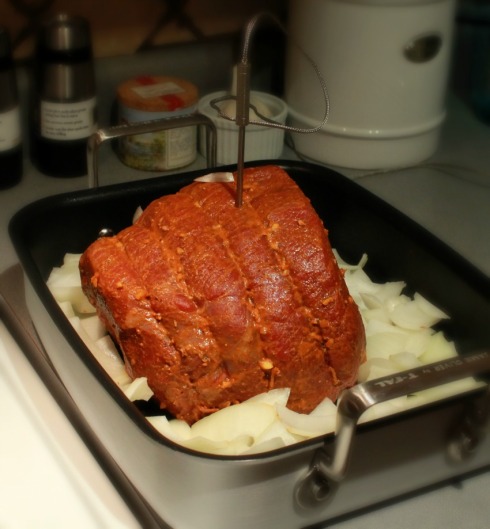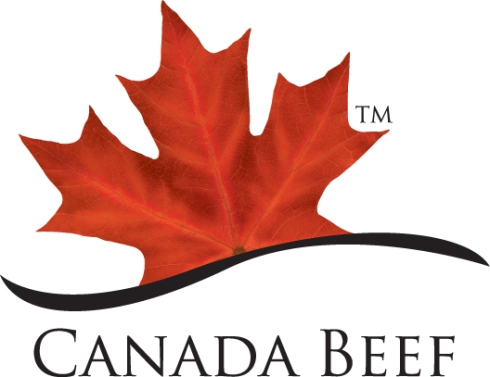
Everyone has his or her own dirty little secrets. Some bloggers even write about those secrets. Up to now, I haven’t been one of those bloggers.
Here’s my dirty little secret for today: I’m quite comfortable in the kitchen, and there are few dishes I haven’t attempted to make, or wouldn’t consider attempting. But I’d never made a roast of beef until recently. I have no idea why, really. In theory, it’s dead simple. You find yourself a large cut of beef, prep it with a spice rub, or even just salt and pepper, and throw it in the oven for several hours until it’s done. Really, a roast does most of the cooking for you.
Of course, that may be why it took me so long to make my first beef roast. I like to play in the kitchen. My brain rationalizes cooking as an active thing—chopping, mixing, stirring. Putting something in the oven or a slow cooker and leaving it be just kind of freaks me out, I guess.
But my most recent assignment as a Canada Beef brand ambassador was to cook a roast of beef—which was exactly the nudge I needed to finally cross this one off my never-cooked list.
Canada Beef’s consumer information site, BeefInfo.org, has a ton of useful tips on making a roast of beef—everything from what cuts to look for, to how long to cook the roast, and of course, recipe ideas. I certainly scoured the site as I was figuring out how to tackle this meal.
One of the most daunting, and eye-opening, elements for me was how to buy a roast. Frankly, I always thought that a beef roast was a beef roast. But it turns out that there are several roast cuts you can choose from, which come from different parts of the cow. Premium roasts come from the loin and rib; they’re more tender, but more expensive. Then there are cuts from the hip. They’re leaner and cheaper. I opted for the latter category, buying a sirloin tip roast.

I made a wet rub for my roast, mixing 1.5 teaspoons of smoked paprika, a half teaspoon each of cinnamon and cumin, one minced garlic clove, a tablespoon of Dijon mustard and a few generous grinds of salt and pepper, plus a few drops of water to bring everything together. I covered the roast in the rub and let it sit in the fridge for a couple of hours so the flavours could work their way into the meat.
To cook my roast beef, I followed Canada Beef’s tip of starting the process by oven-searing the beef. Place the roast in a shallow roasting pan, and cook uncovered in a 450 F oven for 10 minutes, before reducing the heat to 300 F for the rest of the cooking time. To be honest, I didn’t think this got the best sear on the meat and I’ll try their alternate suggestion next time—searing on the stove top in a bit of oil, before putting it into the oven at 300 F.

From there, as Tom Petty once sang, the waiting is the hardest part. Cooking time will depend on the weight of your roast and the degree of doneness you want from your meat. Check out the cooking time chart here for a guideline, but a foolproof method is to use a digital meat thermometer (the team at Canada Beef were kind enough to send all their beef ambassadors one to cook with); you select the type of meat you’re cooking, the doneness level you want (rare, medium or well-done), and the thermometer lets you know when your roast has reached the target internal temperature.
When my roast was done—I bought a five-pound roast to serve a small crowd, and was going for medium-well, so the cooking time was a little over three hours—I let it sit for 20 minutes or so before slicing. This is an important step if you want your roast to be tender and juicy after you cut it.
Turns out that all my food abandonment issues were for naught. The roast turned out great, and it gave us plenty of leftovers for lunch. And, really, what’s better than an easy, hands-off dinner that’s sure to leave you with bonus meals?
Tags: oven meal, roast beef, smoked paprika, winter










